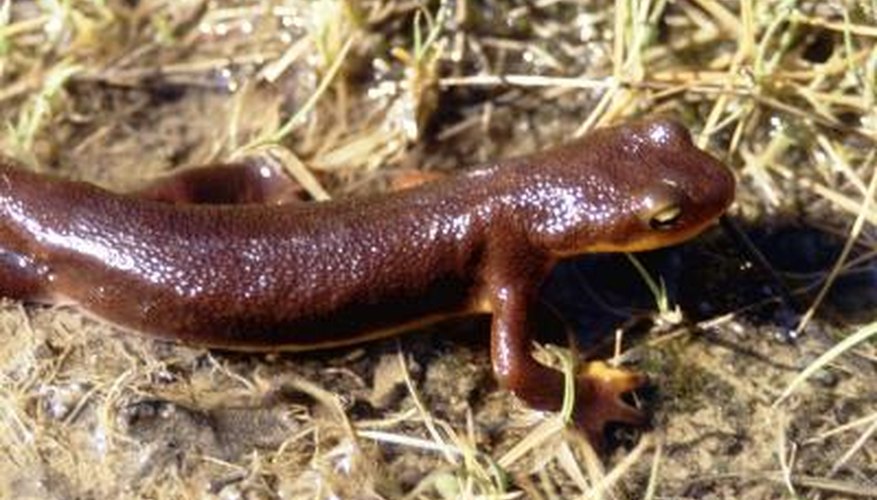Newts are amphibians that can make wonderful pets. If you are interested breeding them, you need to think about distinguishing between males and females. As with many varieties of amphibians, determining the sex of a juvenile newt is impossible, but once the newt has reached young adulthood, the sex can usually be determined through observation.
Examine the cloaca. The cloaca is a small opening located between and behind the hind legs of the newt. The cloaca on a male is larger and during breeding season, it is likely also swollen. On a female newt, the cloaca is smaller and not swollen.
- Newts are amphibians that can make wonderful pets.
- On a female newt, the cloaca is smaller and not swollen.
Look at the size of the newt. In most species, female newts are larger and more plump than male newts. Male newts tend to be more slender and in some species, the size difference can be dramatic. Remember that this measure should only be used when the newts are healthy, as underfed or malnourished females can be quite thin.
Look at the tail. In most species, male newts have tails that are longer than their bodies. Female newts often have tails that are directly proportional to their bodies.
- Look at the size of the newt.
- In most species, male newts have tails that are longer than their bodies.
Examine the cloaca. A male has a larger cloaca than a female.
- A male has a larger cloaca than a female.
Look at the colour. During breeding season, male fire belly newts develop grey or blue highlights on their skin, with brighter colouration on the tail. The skin of the females stays the same.
Examine the toes. The male firebelly newt has longer toes than the female.
Examine the cloaca. A males have a larger cloaca than a female.
- A males have a larger cloaca than a female.
Touch the skin. The skin of a male western newt becomes smoother, spongier and acquires a slimier feeling during breeding season. The female's skin remains relatively firm.
Inspect the toes and legs. During breeding season, the male western newt develops tough, dark patches of skin on their legs and toes called nuptial pads.
Examine the cloaca. Males have a larger cloaca than females, but during breeding season, the female's cloaca develops a mounded, volcano-like shape.
Look at the newt's colouration. During breeding season, the male's skin develops blue and white highlights that run along his flanks and his tail.
Look at the size. This is a species where the female is larger and plumper than the male, but also remember that spotted newts are fairly slender. Even a female that is carrying eggs tends to look thinner than other newts.
- Males have a larger cloaca than females, but during breeding season, the female's cloaca develops a mounded, volcano-like shape.
- This is a species where the female is larger and plumper than the male, but also remember that spotted newts are fairly slender.
